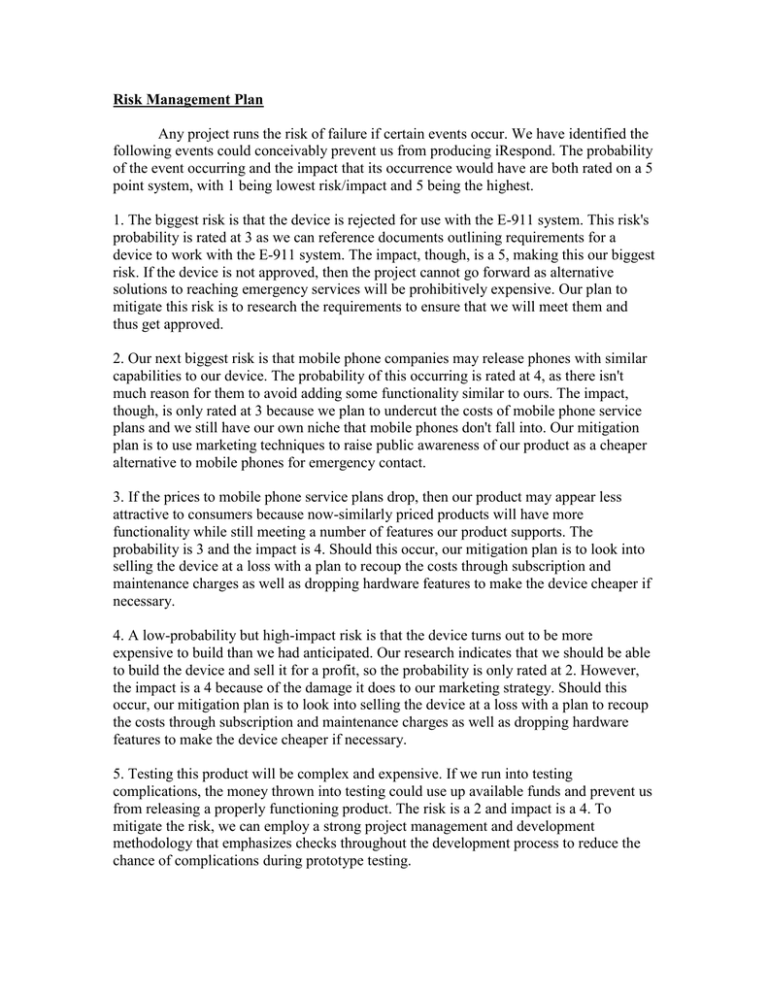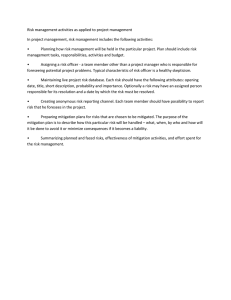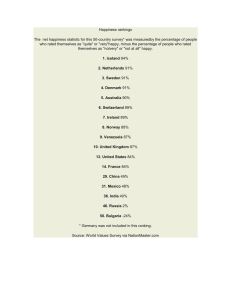Risk Management Plan
advertisement

Risk Management Plan Any project runs the risk of failure if certain events occur. We have identified the following events could conceivably prevent us from producing iRespond. The probability of the event occurring and the impact that its occurrence would have are both rated on a 5 point system, with 1 being lowest risk/impact and 5 being the highest. 1. The biggest risk is that the device is rejected for use with the E-911 system. This risk's probability is rated at 3 as we can reference documents outlining requirements for a device to work with the E-911 system. The impact, though, is a 5, making this our biggest risk. If the device is not approved, then the project cannot go forward as alternative solutions to reaching emergency services will be prohibitively expensive. Our plan to mitigate this risk is to research the requirements to ensure that we will meet them and thus get approved. 2. Our next biggest risk is that mobile phone companies may release phones with similar capabilities to our device. The probability of this occurring is rated at 4, as there isn't much reason for them to avoid adding some functionality similar to ours. The impact, though, is only rated at 3 because we plan to undercut the costs of mobile phone service plans and we still have our own niche that mobile phones don't fall into. Our mitigation plan is to use marketing techniques to raise public awareness of our product as a cheaper alternative to mobile phones for emergency contact. 3. If the prices to mobile phone service plans drop, then our product may appear less attractive to consumers because now-similarly priced products will have more functionality while still meeting a number of features our product supports. The probability is 3 and the impact is 4. Should this occur, our mitigation plan is to look into selling the device at a loss with a plan to recoup the costs through subscription and maintenance charges as well as dropping hardware features to make the device cheaper if necessary. 4. A low-probability but high-impact risk is that the device turns out to be more expensive to build than we had anticipated. Our research indicates that we should be able to build the device and sell it for a profit, so the probability is only rated at 2. However, the impact is a 4 because of the damage it does to our marketing strategy. Should this occur, our mitigation plan is to look into selling the device at a loss with a plan to recoup the costs through subscription and maintenance charges as well as dropping hardware features to make the device cheaper if necessary. 5. Testing this product will be complex and expensive. If we run into testing complications, the money thrown into testing could use up available funds and prevent us from releasing a properly functioning product. The risk is a 2 and impact is a 4. To mitigate the risk, we can employ a strong project management and development methodology that emphasizes checks throughout the development process to reduce the chance of complications during prototype testing. 6. If our competitors release a product with an identical feature set, then we will have to go up against an already-established company. We rate the probability as 3 because while it can happen, our competition does not seem to have the same respect for privacy that we do. The impact is rated at a 3 because competition will be more of a challenge than something that will cause the project to fail. Our mitigation is to improve marketing in response to the competition. 7. If the company that supplies the plastic molding for the case fails to deliver prototype cases on time, our testing schedule will be set back. The probability of this occurring is a 1, and the impact is a 2. Our mitigation in the event this occurs is to have default clauses in our contract with our suppliers and to look at several suppliers to ensure that we pick a reliable company to do business with.

